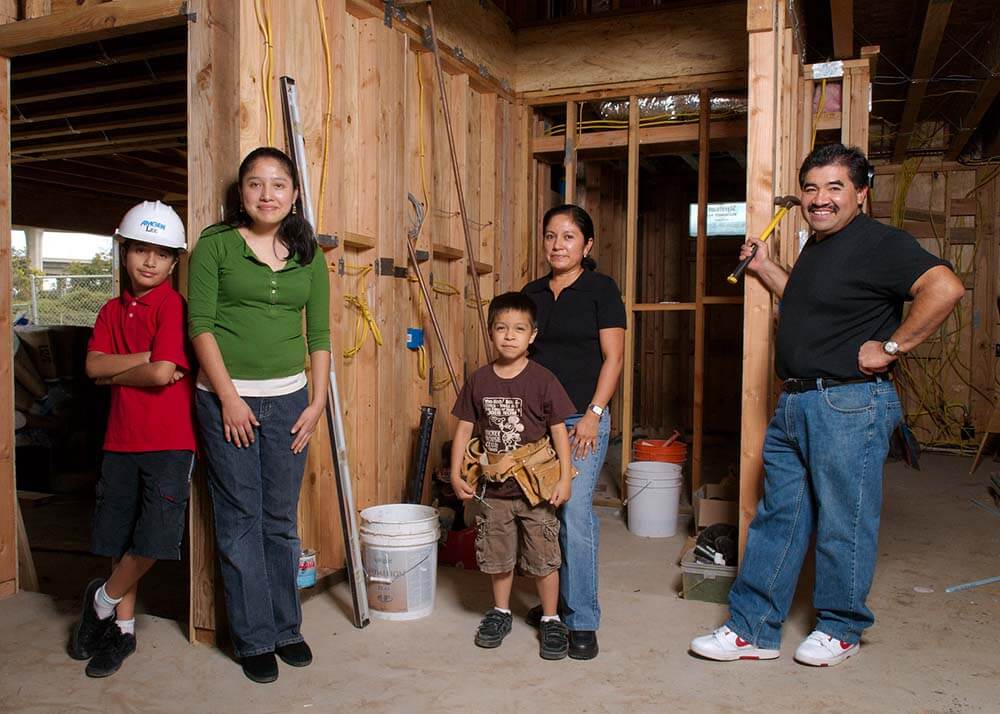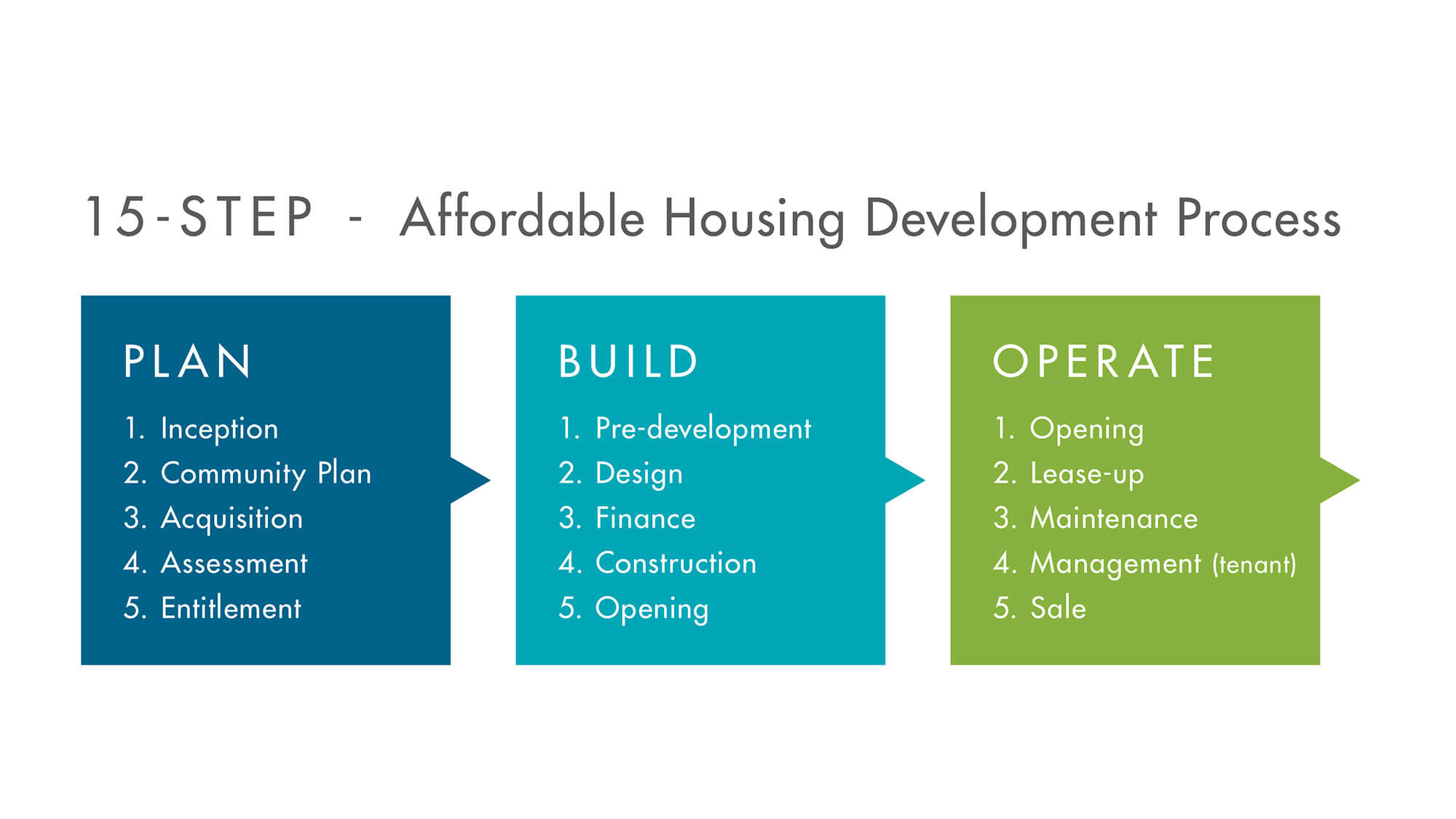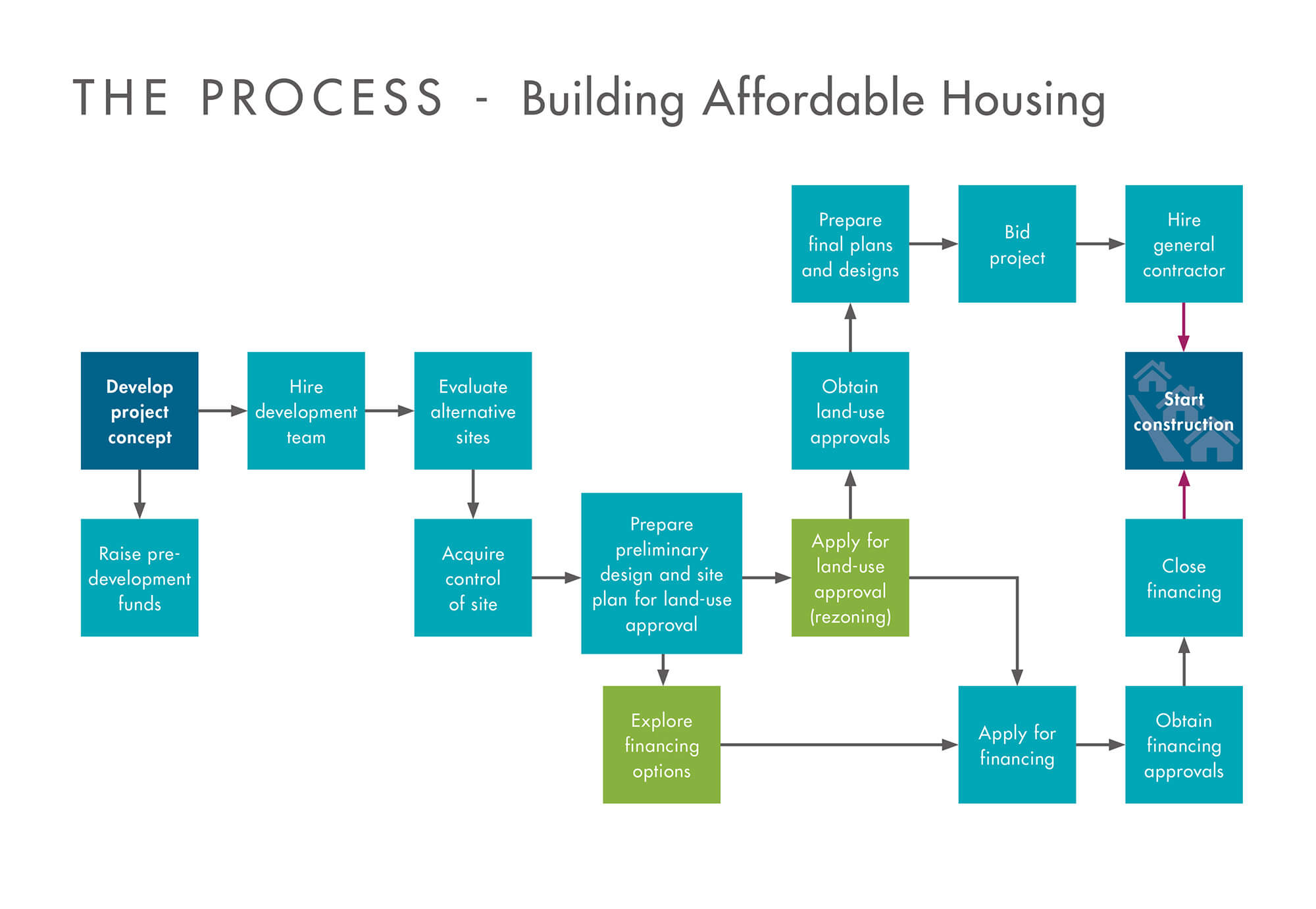Housing Affordability in California
Housing is unaffordable for millions of Californians, particularly among those with the lowest incomes. The housing insecurity and instability that results from the lack of housing affordability impacts people and communities in countless ways, including harming people’s physical and mental health, limiting education outcomes, restricting access to good jobs and economic opportunity, and damaging the environment.
Only by creating and preserving affordable homes at a much greater pace and scale can we hope to provide affordable homes to every person who needs one. The solution seems simple, but what “affordable housing” means and how it gets created can often feel complicated. For a quick primer, keep reading.
What is affordable housing?
The U.S Department of Housing and Urban Development (HUD) considers housing to be affordable when a household spends 30% or less of its income on housing costs. According to the National Low Income Housing Coalition (NLIHC), in 2021, the Fair Market Rent (FMR) for a two-bedroom apartment in California was $2,030. In order to afford this level of rent and utilities — without paying more than 30% of income on housing — a household must earn $6,766 monthly, or $81,191 annually. To put this in perspective, renters currently need to earn nearly 3 times the state minimum wage to afford average asking rents in California.
Affordable housing is housing that is deed-restricted to individuals or households that qualify as low-income, typically for a period of 55 years. There are three low-income categories, each measured by a range of the Area Median Income (AMI): low-income (50-80% of AMI), very low-income (30-50% of AMI), and extremely low-income (below 30% of AMI). Affordable housing developments can have different levels of affordability, such as developments that are exclusively for low-income tenants, or a mix of extremely low income, low income and market rate units.
Affordable housing can be any type of property, including single family homes, duplexes, or multi-family buildings. However, multi-family buildings comprise most affordable housing, as these types of developments are much more cost effective and able to serve many more households. Similarly, affordable housing can be rental housing or owner-occupied housing, but the majority of affordable housing stock is rental housing.
Most affordable housing is made affordable to low-income households by subsidizing the rents or mortgage that the occupants are paying. Just as the government subsidizes critical infrastructure like water and sanitation or healthcare for seniors, people with disabilities, and low-income households, so too does the government help pay for housing for those who need it.
How is affordable housing produced?
Much like unsubsidized market-rate housing, producing housing that is affordable to low-income households requires significant financial resources and technical expertise. Developers of both types of housing must account for projected costs associated with property acquisition and professional service fees, land use approvals required by government agencies, and construction materials and labor.
While both market-rate and affordable housing require significant financial resources and technical expertise, affordable housing developers cannot recuperate their projected costs through the revenue typically earned when a future tenant pays rent. Consequently, affordable housing developers need financing mechanisms offered by federal, state, and local governments to help fill the gap between a development’s projected development cost and its projected cash flow from collected rents.
Affordable housing developers layer multiple sources of funding to help make their developments financially feasible. (In California, developers often layer up to 15 different funding sources!) The Low-Income Housing Tax Credit (LIHTC) Program is a critical financial tool for affordable housing development. Created by Congress through the Tax Reform Act of 1986 and made permanent in 1993, the LIHTC program incentivizes private investors to give equity financing in exchange for reduced tax liabilities once the affordable housing development is complete, or “placed in service.” First, federal tax credits are distributed to state agencies, which then award the credits to affordable housing developers that meet competitive standards set by the state agency. Affordable housing developers that are awarded tax credits can then sell the LIHTC to investors. This investment provides upfront capital that subsidizes development costs and reduces the need for debt financing from lending institutions.
The State Treasurer administers LIHTC through the California Tax Credit Allocation Committee (CTCAC). A qualifying affordable housing development ensures that the development will remain affordable for 15 to 30 years (although state funding programs often require an affordability period of 55 years).
A related agency, the California Debt Limit Allocation Committee (CDLAC), sets the annual debt ceiling for bonds that are used to finance tax-exempt projects like affordable housing developments. California also provides its own programs to finance the development of affordable housing, including the Multifamily Housing Program and the state LIHTC program.
Developers of affordable housing also rely on federal programs that provide funding for the construction, maintenance, and rehabilitation of units, such as project-based vouchers, HOME Investment Partnerships, and Community Development Block Grants (CDBG), as well as programs that provide funding to households through rent subsidies, such as the Housing Choice Voucher program.

Solutions
Housing California advances evidence-based solutions to create stable, affordable homes for low-income Californians. Click here to learn more.

Below are more resources to help you build your understanding of affordable housing development and the challenges it faces.


